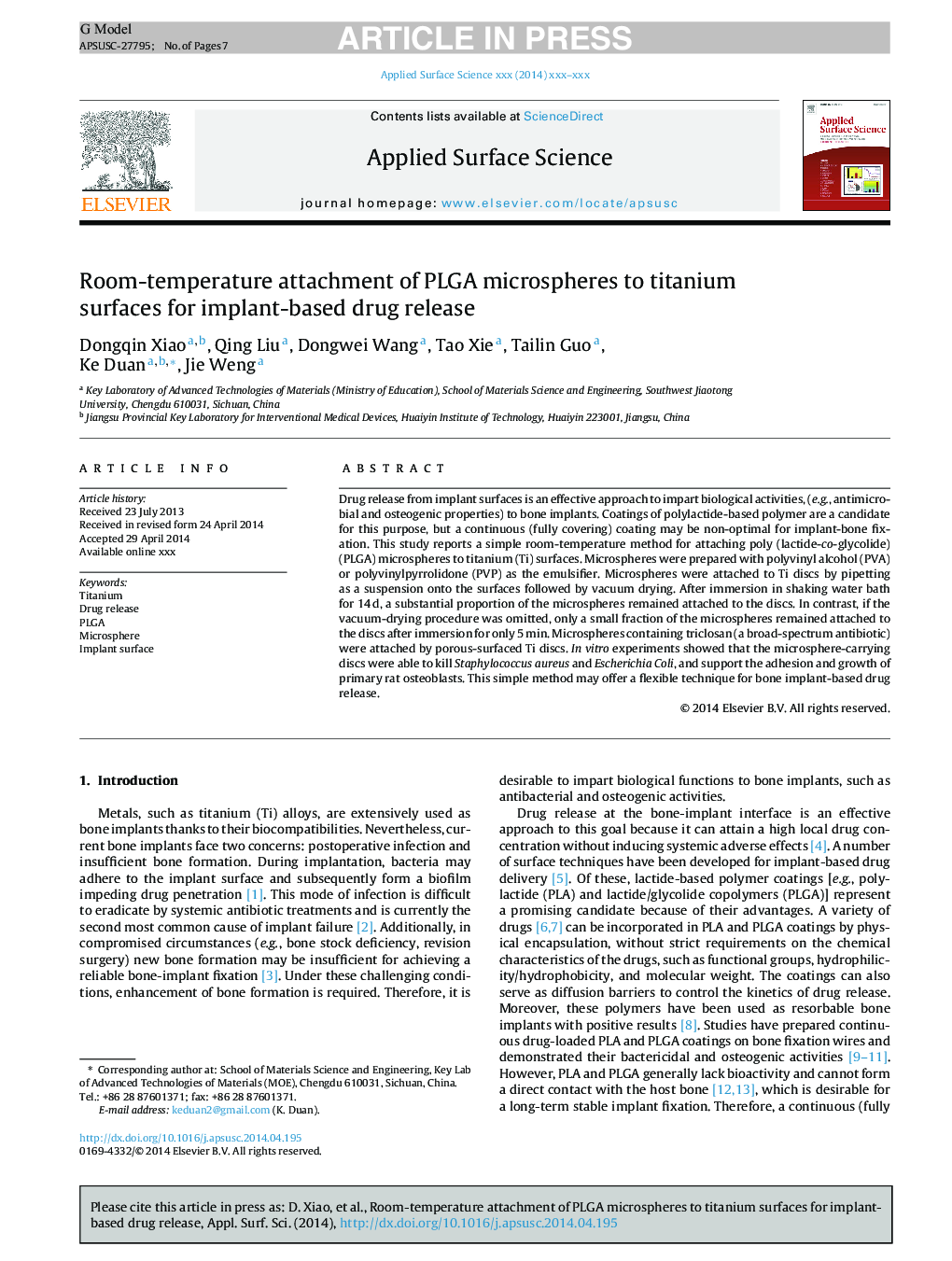| Article ID | Journal | Published Year | Pages | File Type |
|---|---|---|---|---|
| 5357046 | Applied Surface Science | 2014 | 7 Pages |
Abstract
Drug release from implant surfaces is an effective approach to impart biological activities, (e.g., antimicrobial and osteogenic properties) to bone implants. Coatings of polylactide-based polymer are a candidate for this purpose, but a continuous (fully covering) coating may be non-optimal for implant-bone fixation. This study reports a simple room-temperature method for attaching poly (lactide-co-glycolide) (PLGA) microspheres to titanium (Ti) surfaces. Microspheres were prepared with polyvinyl alcohol (PVA) or polyvinylpyrrolidone (PVP) as the emulsifier. Microspheres were attached to Ti discs by pipetting as a suspension onto the surfaces followed by vacuum drying. After immersion in shaking water bath for 14Â d, a substantial proportion of the microspheres remained attached to the discs. In contrast, if the vacuum-drying procedure was omitted, only a small fraction of the microspheres remained attached to the discs after immersion for only 5Â min. Microspheres containing triclosan (a broad-spectrum antibiotic) were attached by porous-surfaced Ti discs. In vitro experiments showed that the microsphere-carrying discs were able to kill Staphylococcus aureus and Escherichia Coli, and support the adhesion and growth of primary rat osteoblasts. This simple method may offer a flexible technique for bone implant-based drug release.
Related Topics
Physical Sciences and Engineering
Chemistry
Physical and Theoretical Chemistry
Authors
Dongqin Xiao, Qing Liu, Dongwei Wang, Tao Xie, Tailin Guo, Ke Duan, Jie Weng,
